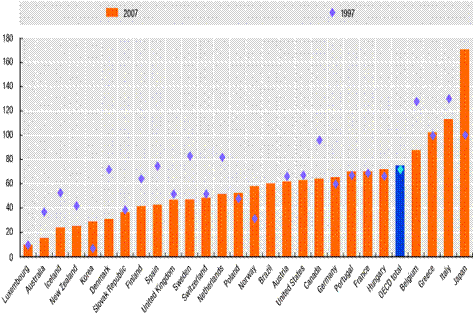From the New York Times:
Vast public infrastructure projects, like high-speed rail, helped create Spain’s current fiscal morass and did little to revitalize Japan during its lost decade.Of course, given the magnitude of the demographic and economic forces acting on Japan, it's difficult to say exactly what effect high-speed rail had.
As for Spain, do we really have reason to believe massive spending on public works helped cause the crisis? Here's Paul Krugman's answer:

On the eve of the crisis, Spain was running a budget surplus; its debts, as you can see in the figure above, were low relative to GDP.Wouldn't Glaeser's argument imply that Spain was spending too much and wouldn't that, in turn, show up in the debt to GDP numbers?So what happened? Spain is an object lesson in the problems of having monetary union without fiscal and labor market integration. First, there was a huge boom in Spain, largely driven by a housing bubble — and financed by capital outflows from Germany. This boom pulled up Spanish wages. Then the bubble burst, leaving Spanish labor overpriced relative to Germany and France, and precipitating a surge in unemployment. It also led to large Spanish budget deficits, mainly because of collapsing revenue but also due to efforts to limit the rise in unemployment.
No comments:
Post a Comment